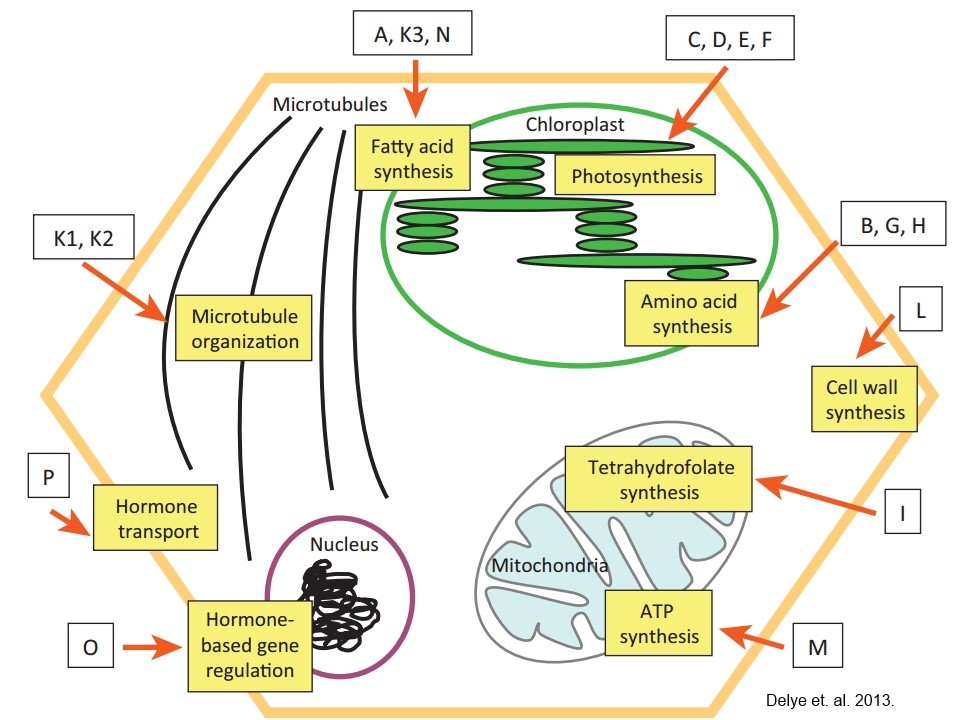Chapter 15: MOA Part 1: Lipid Synthesis Inhibitors & Seedling Shoot Growth Inhibitors
15.3 Importance of Lipids
All organisms synthesize fatty acids, which are used primarily as precursors for a family of lipids that are essential components of cellular membranes (ie plasma membrane, membrane around organelles, etc). In plants, some fatty acids are elongated in a related series of reactions to produce suberin and cuticular waxes (ie think of the cuticle layer). These are critical protective compounds on leaf and stem surfaces and as we discussed in the last chapter, this layer also can inhibit herbicide absorption. Breakdown products of fatty acids are also widely used as signaling molecules as part of cellular responses to external stimuli. Therefore, herbicide inhibition of either fatty acid synthesis or elongation prevents the production of these important molecules and is lethal to plants. There are two Mode of Actions that negatively affect plants in this manner:
- Lipid Synthesis Inhibitors
- Group 1. Accase Inhibitors (ACC) (HRAC Group A)
- Seedling Shoot Growth Inhibitors
- Group 8. Lipid Synthesis Inhibitors, not ACCase (LSI) (HRAC Group N)
- Group 15. Long-Chain Fatty Acid Inhibitors (May also see this referred to as Mitosis Inhibitors (CDI). (HRAC Group K3)
- Group 16. Specific Site Unknown (HRAC Group N)

Review and Reflection